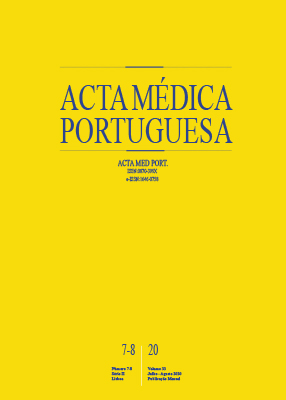Primary Pulmonary Tumor in an Adolescent
DOI:
https://doi.org/10.20344/amp.12690Keywords:
Adolescent, Granuloma, Plasma Cell, Lung Neoplasms, MyofibromaAbstract
Primary lung tumors in the pediatric age group are rare, histologically diverse and have different therapeutic approaches. The inflammatory myofibroblastic tumor of the lung accounts for 0.04% - 1.2% of all lung tumors, is more common in children and young adults and its etiology is unknown. The diagnosis is difficult as clinical and radiological findings are highly variable. We report a case of a 15-year-old adolescent who presented with a single pulmonary nodule on a chest radiograph, in the context of a respiratory infection, and whose etiological investigation revealed an inflammatory myofibroblastic tumor of the lung. Atypical resection was performed by video-assisted thoracoscopic surgery, with full recovery. We highlight the rarity of this entity, the need for a high suspicion index and the diagnostic investigation undertaken to reach a definitive diagnosis and a successful outcome.
Downloads
Downloads
Published
How to Cite
Issue
Section
License
All the articles published in the AMP are open access and comply with the requirements of funding agencies or academic institutions. The AMP is governed by the terms of the Creative Commons ‘Attribution – Non-Commercial Use - (CC-BY-NC)’ license, regarding the use by third parties.
It is the author’s responsibility to obtain approval for the reproduction of figures, tables, etc. from other publications.
Upon acceptance of an article for publication, the authors will be asked to complete the ICMJE “Copyright Liability and Copyright Sharing Statement “(http://www.actamedicaportuguesa.com/info/AMP-NormasPublicacao.pdf) and the “Declaration of Potential Conflicts of Interest” (http:// www.icmje.org/conflicts-of-interest). An e-mail will be sent to the corresponding author to acknowledge receipt of the manuscript.
After publication, the authors are authorised to make their articles available in repositories of their institutions of origin, as long as they always mention where they were published and according to the Creative Commons license.









